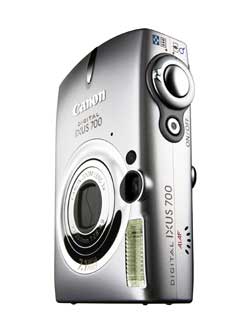

 By Mark Harris
By Mark HarrisCCD – This chip at the heart of every digital camera turns light into electrical signals. The CCD records the scene as millions of picture elements (megapixels).
EVF – An electronic viewfinder is a small LCD screen that replaces the optical viewfinder on some digital cameras, especially those with long zoom lenses. Like the main display, EVFs offers pixel-perfect framing but many can be tiring on the eye and tricky to use in low light.
Macro – You’ll find this separate close-up function on most digital cameras. The best cameras have a minimum focus distance of just 5cm from the lens, or even less.
Focal length – The focal length of a lens determines how much of a wide-angle scene or telephoto close-up it can capture. Figures are usually quoted as ‘35mm equivalent’ to avoid confusion caused by variations in the way digital cameras are made.
USB – This is the technology used to transfer images from your camera to your computer. If both have modern USB 2.0 sockets, the data will move across much faster than if either uses older USB 1.1 technology.
ISO – The higher a camera’s ISO, the more sensitive its CCD is to light and the darker the conditions in which it can shoot without using the flash. However, high sensitivities (ISO400 or over) will add grainy digital noise and can distort colours.
White balance – A range of white balance presets for different lighting conditions (daylight or fluorescent bulbs, for example) will help capture colours accurately. The ability to manually fix the white balance is useful, too.
Compression – Digital cameras condense the raw picture information when storing images, usually as a JPEG format file. Some models allow you to choose high compression rates to fit more images on your memory card, although image quality will suffer. Lossless formats like TIFF or RAW create much larger file sizes.
Aperture – The larger the aperture of the camera’s lens, the more light it can let through to the CCD. A lens’s maximum aperture always varies with focal length, from around f2.5 at the wideangle setting to anything from f4 (good) to f8 (not so good) at telephoto zoom.
Exposure compensation – This simple manual control lets you increase the exposure for backlit subjects or decrease it for bright snow or surf scenes. Each +1EV change doubles the amount light entering the camera.